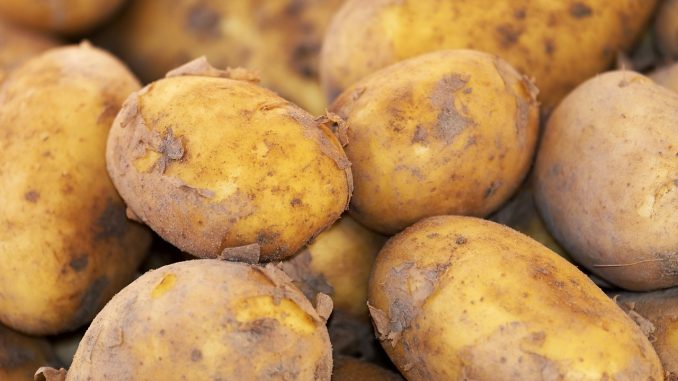
Potato seed production is a critical aspect of the potato farming process, as it lays the foundation for a successful crop. Potatoes are typically grown from tubers, which are essentially the seed potatoes used for planting. The process of potato seed production involves several stages, from selecting quality seed potatoes to managing the cultivation of the crop and ensuring proper storage for future use. This comprehensive discussion will delve into the intricacies of potato seed production, covering key aspects such as seed selection, planting, cultivation practices, disease management, and storage.
1. Seed Selection:
The first step in potato seed production is the careful selection of high-quality seed potatoes. These seed potatoes serve as the planting material for the upcoming crop. It is essential to choose disease-free potatoes with desirable characteristics, including uniform size, shape, and color. Certified seed potatoes are often preferred as they undergo rigorous inspection to ensure they meet specific quality standards. Certified seeds help minimize the risk of introducing diseases into the new crop and contribute to better yields and crop health.
2. Pre-Planting Treatment:
Before planting, seed potatoes may undergo pre-planting treatments to enhance their performance. This can include treatments to prevent the spread of diseases and to stimulate sprouting. Chemical treatments or hot water baths are commonly used methods to eliminate pathogens that may be present on the surface of the seed potatoes.
Seed potatoes are also available to the amateur garden grower and form an important source of knowledge about growing conditions, horticultural practises and types of potato used for growing on. We have a page devoted to their cultivation.
3. Planting:
Potato seed planting is typically done in the spring. The planting process involves cutting the seed potatoes into smaller pieces, each containing one or more “eyes” or buds. These pieces are then planted in rows or hills, ensuring proper spacing to allow for healthy tuber development. Planting depth is crucial, and it varies based on factors such as soil type and climate. Adequate spacing and depth promote proper tuber formation and prevent competition among plants.
4. Cultivation Practices:
Several cultivation practices are essential for optimal potato seed production:
a. Fertilization:
Proper fertilization is crucial for potato growth. Potatoes require nutrients such as nitrogen, phosphorus, and potassium for healthy development. Fertilizer application should be based on soil nutrient levels and the specific requirements of the potato variety being cultivated.
b. Irrigation:
Adequate and consistent irrigation is essential for potato seed production. Potatoes need a steady supply of water throughout their growth cycle, with careful attention paid to avoid waterlogged conditions that can lead to diseases.
c. Hilling:
Hilling involves mounding soil around the base of the potato plants as they grow. This practice helps prevent tubers from being exposed to sunlight, which can cause them to turn green and produce solanine, a toxic compound. Hilling also provides support for the plants and encourages additional tuber formation.
5. Disease Management
Disease management is a critical aspect of potato seed production. Potatoes are susceptible to various diseases, including late blight, early blight, and bacterial wilt. Crop rotation, the use of disease-resistant varieties, and the application of fungicides and other protective measures are essential for preventing and managing diseases. Additionally, maintaining proper spacing between plants and ensuring good air circulation helps reduce the risk of fungal infections.
6. Harvesting:
Potato plants are ready for harvest when the foliage begins to yellow and die back. Harvesting is typically done in late summer or early fall, depending on the potato variety and local climate. Careful handling during harvest is crucial to prevent damage to the tubers. Mechanical harvesters or manual harvesting methods may be employed, depending on the scale of the operation.
7. Post-Harvest Handling:
After harvesting, the seed potatoes undergo post-harvest handling procedures. This includes curing, a process where the potatoes are stored in a warm, humid environment for a few weeks. Curing allows the skins to set and any minor wounds to heal, reducing the risk of rot during storage.
8. Storage:
Proper storage is vital to maintain the quality of seed potatoes for the next planting season. Storage facilities should provide cool temperatures and high humidity levels. Ventilation is essential to prevent the build-up of ethylene, a natural gas produced by potatoes that can accelerate the aging process. Regular monitoring for signs of disease and proper storage conditions help ensure that the seed potatoes remain viable and healthy until the next planting season.
9. Quality Assurance:
Throughout the entire process of potato seed production, quality assurance measures are crucial. This includes regular inspections for disease symptoms, adherence to planting and cultivation best practices, and proper documentation of the seed source. Quality assurance helps maintain the integrity of the seed potato crop and contributes to the overall success of the subsequent potato cultivation.
10. Challenges and Considerations:
Potato seed production is not without its challenges. The risk of diseases, fluctuations in weather conditions, and the need for careful management practices all pose potential hurdles. Additionally, the emergence of new potato varieties and the continuous evolution of pests and diseases necessitate ongoing research and adaptation in seed production methods.
Potato seed production is a comprehensive and detailed process that involves several stages, from seed selection to post-harvest handling. The quality of the seed potatoes is a critical factor that directly influences the success of the subsequent potato crop. By employing best practices in cultivation, disease management, and storage, farmers can ensure the production of high-quality seed potatoes, leading to healthier crops, increased yields, and sustainable potato farming practices. Continuous research and innovation in potato seed production contribute to the resilience of this important global food crop.
Leave a Reply